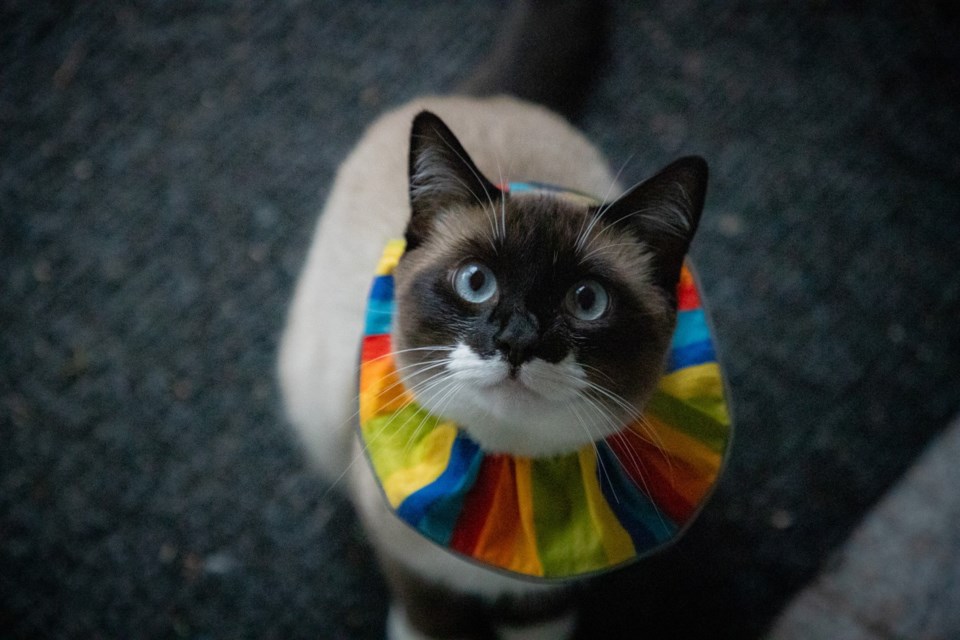Cat attacks are one of the most common reasons wild birds become injured. According to Canadian Wildlife Health Cooperative, cats kill between 100 and 350 million birds per year in Canada, in addition to many small mammals, reptiles and amphibians. Some isolated wildlife populations are being pushed towards extinction because of cat attacks, and many others are currently at risk.
Cat attacks happen most frequently during baby season. In May alone, 20 birds were admitted to the Wildlife Rescue rehabilitation facility because they were attacked by a cat.
New wildlife families are vulnerable to attacks by outdoor cats as newborn babies are often immobile, and easy victims to cats’ keen senses. Their parents will do everything they can to protect their young, but for many songbirds and prey species of mammals, reptiles and amphibians there is nothing the parents can do but flee to protect themselves.
Cat saliva contains bacteria that can be life-threatening for the prey they capture. So, if your cat has caught a bird, bat, or other wild animal, it is important to take the victim to a wildlife rehabilitator as soon as possible as deadly infections can quickly set in.
Stray cats are one of the worst causes of cat attacks. It is possible to mitigate these attacks by ensuring that feral cats are spayed and neutered to reduce their populations over the longer term, thereby protecting wildlife from the mortality they inflict.
Regarding owned cats, cat-bird encounters can be easily prevented by keeping cats indoors. Inside cats live longer because they are kept safe from contracting contagious diseases, picking up parasites like lice and ticks, and becoming injured by cars and fights with other cats.
If keeping your cat indoors is not possible, keeping them on a leash or creating a “catio” or outdoor enclosure is also a great option. These precautions allow your feline friend to spend time outdoors without being a danger to native wildlife.
Another popular and effective way to reduce the chance of outside cats attacking birds is by purchasing a colourful cat scrunchie or bib they can wear around their neck. Cats rely on stealth while hunting, often crouching and hiding in tall grass or bushes. The cat scrunchie is bright and colourful, allowing birds to see the cat before it can get close enough to pounce. While it’s not 100% guaranteed to stop attacks, it has been proven to greatly reduce the risk of birds being caught off guard. On top of that, it gives your cat a cool accessory.
Together, we are all responsible for looking out for urban wildlife. Small changes like these make a significant difference in the success of the songbird populations in Canada.
This article was written by Elin Molenaar, the communications assistant at Wildlife Rescue Association.



